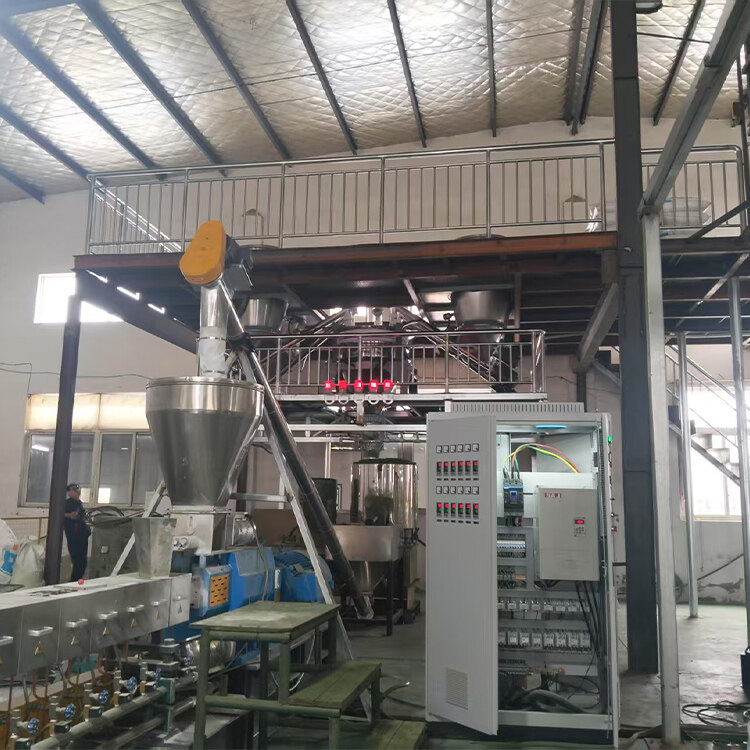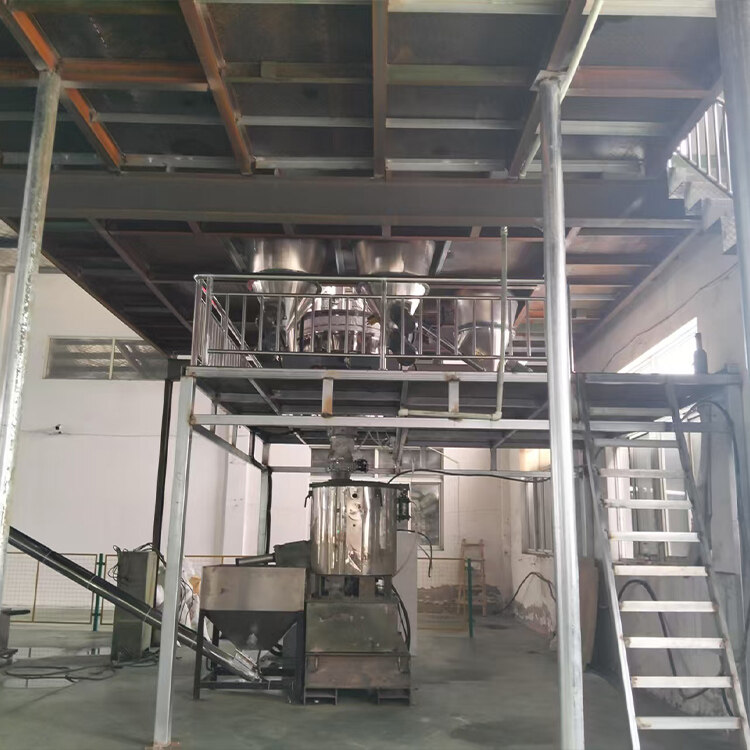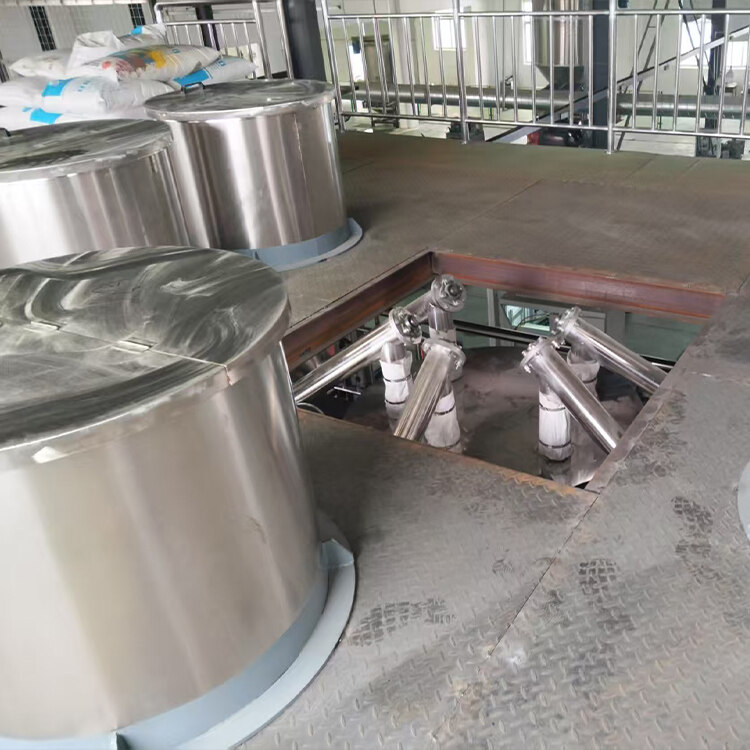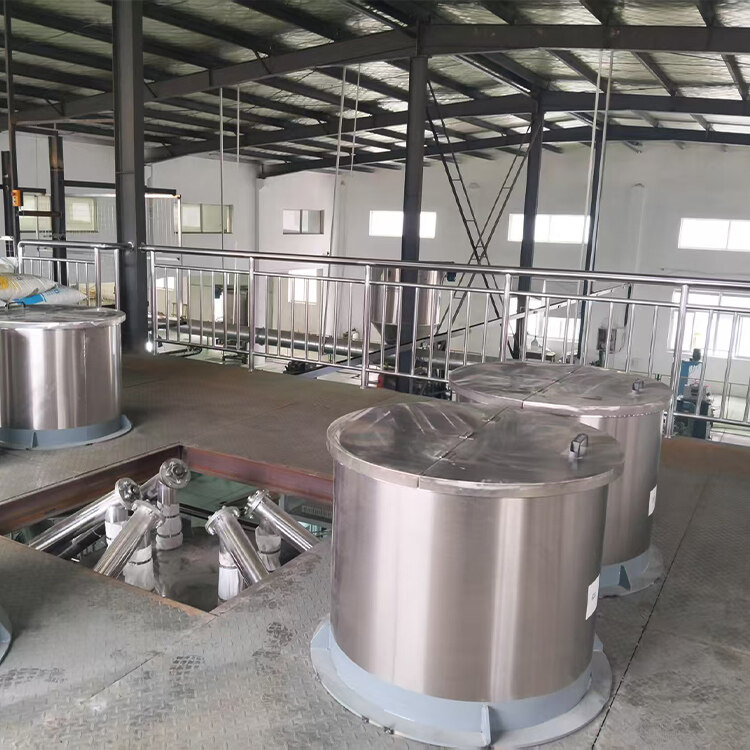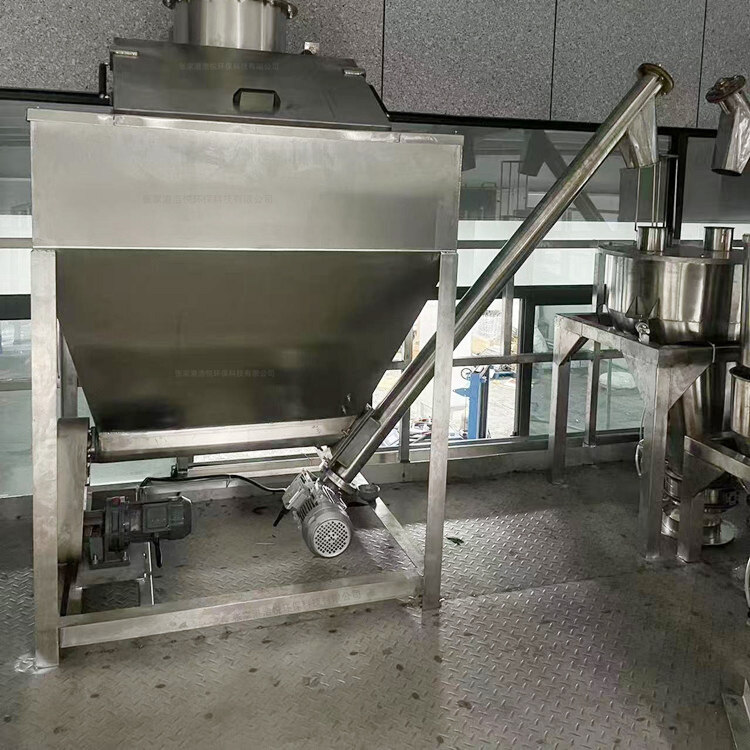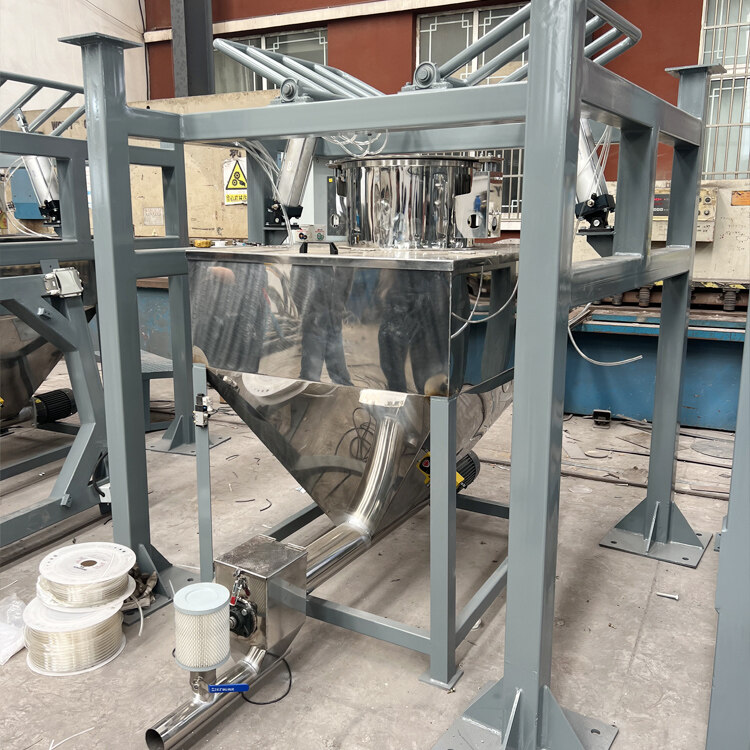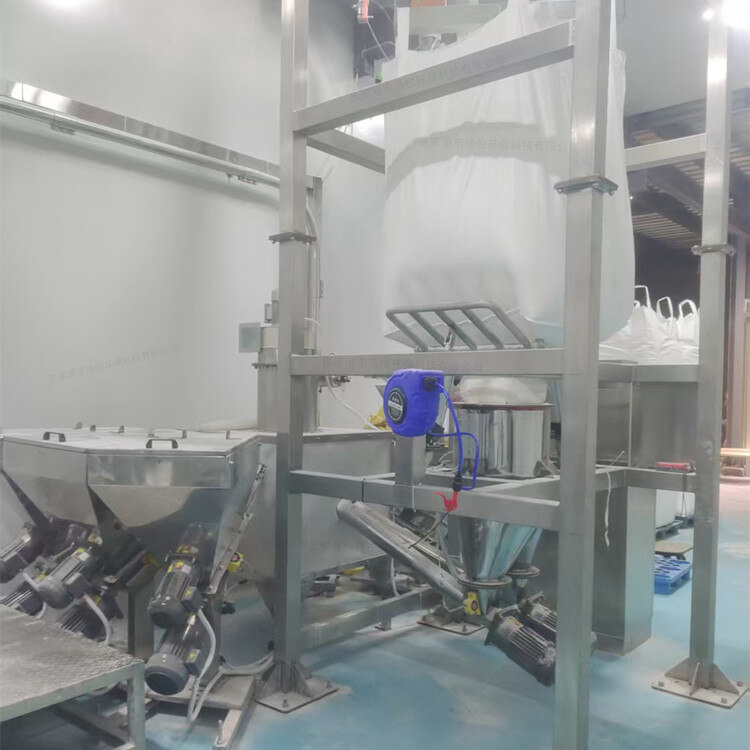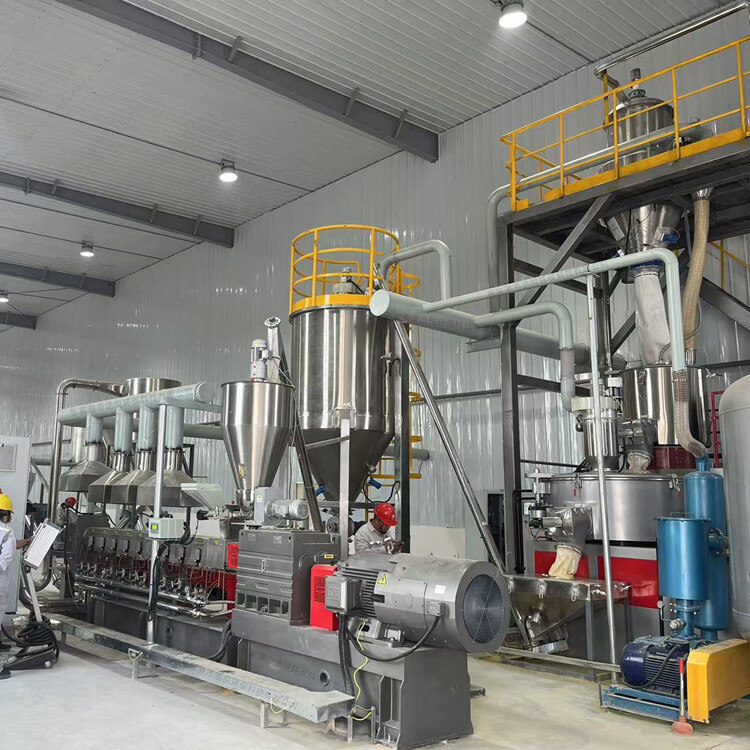- Introduction to automatic batching machine and fully automatic batching machine equipment
- The powder metering system tells you about the introduction of the mixing and drying machine
- 1000kg vacuum feeding machine
- Fully automatic small material batching system
- Research on Innovation of Automatic Weighing Machine Technology
- Design and operation of automatic batching system using PLC, industrial computer and frequency converter
Modified plastic equipment
- Category:other
- Hits:169次
- Release Date:2025-06-23
- Share:
- Inquiry
- Details
1、 Raw material pretreatment equipment
Drying equipment
Plastic raw materials usually need to be dried before processing to remove moisture and prevent problems such as bubbles and degradation during extrusion and other processes. The hot air circulation dryer circulates hot air at 60-120 ℃ and is suitable for materials with low moisture absorption such as PE and PP; The dehumidifier dryer, combined with molecular sieve moisture absorption and hot air circulation, can lower the dew point to below -40 ℃, suitable for high moisture absorbing materials such as PA and PC, ensuring a drying accuracy of ± 0.01%.
Crushing and screening equipment
The crusher is used to crush recycled or large raw materials into particles of 5-10mm. The blades are mostly made of wear-resistant tungsten steel material, and the speed can reach 3000-6000rpm. The vibrating screen screens the crushed raw materials through a 100-200 mesh sieve to remove impurities, ensure uniform particle size, and avoid blockages during subsequent processing.
2、 Ingredients and Mixing System
automatic doser
Solid state ingredients: For solid materials such as resins, fillers, and additives, a weight loss measuring scale (with an accuracy of ± 0.1%) is used in combination with a screw feeder to accurately measure according to the formula. For example, in the production of flame-retardant ABS, materials such as ABS resin, brominated flame retardants, antimony trioxide, etc. can be accurately proportioned.
Liquid ingredients: For liquid additives such as plasticizers and coupling agents, quantitative addition is achieved through gear pumps and electromagnetic flow meters (accuracy ± 0.5%), such as accurate addition of dioctyl phthalate (DOP) in PVC modification.
mixing equipment
High speed mixer is a commonly used equipment. The stirring blade speed inside the stainless steel container can reach 500-3000rpm, and it is equipped with a heating/cooling jacket (temperature control range 0-200 ℃). Through shear force and heat conduction, the material is evenly dispersed, and the mixing uniformity can reach over 99.5%. The dual axis blade mixer is suitable for high filling systems, with a volumetric efficiency of 80%, and can complete mixing in 5-10 minutes.
3、 Extrusion modification core equipment
extruder
Single screw extruder: With a simple structure and low cost, it is suitable for simple processes such as color masterbatch and filling modification. The length to diameter ratio (L/D) of the screw is usually between 20-30, and the output is 50-500kg/h. However, the mixing and dispersing effect is limited.
Twin screw extruder: It is a key equipment for the production of modified plastics, divided into two types: co rotating and counter rotating. The screw length to diameter ratio can reach 32-48, and it adopts modular design, including conveying section, melting section, mixing section, exhaust section, etc. Its threaded components (forward threads, reverse threads, and kneading blocks) can generate high shear forces, and in glass fiber reinforcement modification, the glass fiber length retention rate can be greater than 80%; The vacuum exhaust port in the middle section can remove moisture and volatile substances. When modifying PC, the vacuum degree should be controlled at<-0.09MPa to ensure product quality. The output of twin-screw extruder is 100-2000kg/h, with a temperature control accuracy of ± 1 ℃.
pelletizing system
Water cooled strip granulation is the process of cutting extruded material into particles with a diameter of 2-4mm after cooling in a water tank. The equipment cost is low, but the particle surface is prone to adhesion; Underwater granulation refers to the direct cutting of molten particles in water, with high particle roundness (sphericity>95%), no dust, and suitable for high-end modified material production. However, the equipment investment is 3-5 times that of strip granulation.
4、 Forming and processing equipment
Injection molding machine: used for producing modified plastic parts, such as car bumpers (PP modified material), home appliance shells, etc. The locking force range is 500-5000kN, the injection volume is 100-5000g, and the temperature control accuracy is ± 0.5 ℃, ensuring the quality of product molding.
Extrusion molding machine: capable of producing products such as pipes and sheets, such as PVC modified drainage pipes (with added calcium zinc stabilizers), with a die temperature controlled at 180-200 ℃ and a traction speed of 1-5 m/min.
Blow molding machine: mainly used for manufacturing hollow products, such as modified PE pesticide bottles, with a billet extrusion speed of 20-50mm/s and blow molding pressure of 0.6-1.2MPa.
5、 Development Trends of Equipment Technology
Intelligence and digitalization: Introducing PLC+touch screen control system to monitor real-time parameters such as melt pressure, temperature, torque, etc., with a data acquisition frequency of up to 10 times per second, and supporting remote operation and maintenance; By using AI algorithms, parameters such as screw speed and temperature can be automatically adjusted based on the characteristics of the raw materials, with an error controlled within 3%.
Energy saving and environmental protection: driven by servo motors, saving 30% -50% energy compared to traditional motors; Optimize the screw structure and heating system to reduce energy consumption; Develop low VOC (volatile organic compound) emission equipment to meet environmental requirements.
High precision and specialization: Develop specialized equipment for different industry needs, such as cleanroom equipment used in the medical device industry, made of 316L stainless steel material and equipped with CIP cleaning system, in compliance with GMP standards; A specialized production line for flame retardant modification in the electronic and electrical industry, equipped with high-precision metering pumps and rapid screen changers.
Modified plastic equipment achieves diversified modification of plastic raw materials and promotes the widespread application of modified plastics in various fields through the collaborative operation of various equipment links. With the continuous advancement of technology, modified plastic equipment will develop towards a more intelligent, efficient, and environmentally friendly direction, injecting new vitality into the modified plastic industry.


